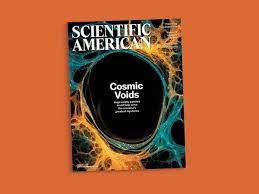- Vitamins are organic molecules essential in small quantities for proper metabolic function.
- Most vitamins are not single molecules, but groups of related molecules caller vitamers.
- The term vitamin does not include minerals, essential fatty acids and essential amino acids.
- There are 13 vitamins, and maybe 14:
- Vitamin A (all-trans-retinols, all-trans-retinyl-esters, as well as all-trans-beta-carotene and other provitamin A carotenoids)
- Vitamin B1 (thiamine)
- Vitamin B2 (riboflavin)
- Vitamin B3 (niacin)
- Vitamin B5 (pantothenic acid)
- Vitamin B6 (pyridoxine)
- Vitamin B7 (biotin)
- Vitamin B9 (folic acid and folates)
- Vitamin B12 (cobalamins)
- Vitamin C (ascorbic acid and ascorbates)
- Vitamin D (calciferols)
- Vitamin E (tocopherols and tocotrienols)
- Vitamin K (phylloquinones, menaquinones, and menadiones)
- All vitamins were discovered between 1913 and 1948.
- The first by Frederick Hopkins of England was vitamin A in 1913. He earned a Sir status.
- Beginning in 1935, a few vitamins like B and C became available.
- Big Pharma began to mass produced vitamins and market vitamin supplements in the 1950s.
- Today half of American adults (70% of those older than 65) take a range of vitamins, at a cost of $12 billion/year.
- Multivitamins do not reduce the risk of heart disease or cancer, nor mental declines.
- Vitamins do not cure tiredness, depression or insomnia.
- Too much of vitamin A, B6, C, D, E and K can be toxic and cause side reactions and lead to kidney stones.
- If anything, vitamin E and beta-carotene supplements appear to be harmful, especially at high doses.
- Medical sources all say that a nutritious diet controlling your weight and reducing the amount of saturated fat, trans fat. sodium and sugars should be sufficient to keep you healthy.
- Everyone is warned that you should take vitamins only after getting medical advice.
- Discovered in 1920 as the solution to rickets, a bone disease.
- Somewhat different, for unlike the other vitamins, it is produced in the body, supplementing what is already found in fish and egg yolks.
- Sunlight helps a chemical in your skin make D3, which is transformed by your liver and kidneys into active vitamin D.
- There are several types of vitamin D, but only D2 and D3 are important. D2 is from plants and D3 from animals.
- As work shifted from farms to offices, non-white populations were at risk, particularly if you live north of 37 degrees north (in the U.S., draw a line between Philadelphia and San Francisco) and below 37 degrees south. This is exacerbated if you use sunblock.
- Some doctors are inclined to tell their patients to avoid the sun to reduce the risk of malignant melanomas and skin wrinkles, so instead take vitamin D by mouth.
- The matter of osteoporosis is controversial. If you are getting older and don't get into the sun and don't consume fish or egg yolk, a supplement might make sense. But first check with your doctor.
- How much of them? Not that easy, actually. Oily fish is best. Two 8-ounce cans of of tuna provides 400 IU, same for a quart of fortified milk.
- The recommended amount of vitamin D is 600 IU daily for those up to 69 and 800 IU for people older than 70,
- Thus, diet alone will be a problem for many.
- Prostate cancer can be reduced for some with vitamin D.
- But some of us don't have enough vitamin D.
- If you live in New York, from October to April, even if you spend time outdoors, take a vitamin D supplement.
- Even from May to September, you need 15-20 minutes of sun/day. If you're over 70, you need more than 20 minutes because your body will have lost the sun to skin to body efficiency.
- The average healthy person loses abut 500 milligrams of calcium every day from bones, and replaces it with the same amount of new calcium if you have sufficient vitamin D.
- How do you know if you're vitamin D-deficient?
- The best way is to measure in your blood 25-hydroxyvitamin D.
- There are also bone density tests.
Overtesting by doctors of vitamin D serum levels remains widespread. Experts disagree about how to interpret the test and many doctors still unnecessarily recommend vitamin D supplements. The supplements represent more than a $1 billion market, despite the lack of evidence that they are necessary for the majority of people (not to mention the fact that vitamins are not independently tested for purity or dosing).
GrassrootsHealth is a nonprofit public health research organization dedicated to promoting optimal health worldwide through research, education, and advocacy, with a primary focus on the role of vitamin D. Through evidence-based education, resources, and our citizen-science approach to research, we empower individuals to make informed decisions about their health and healthcare providers to move research into practice.
With a panel of 48 senior vitamin D researchers from around the world contributing to its operations, GrassrootsHealth has been running the world’s largest public health intervention study – the D*action field trial – to solve the vitamin D deficiency epidemic worldwide.
The counterpoint by Dr. Cedric Garland of the University of California at San Diego says:“This hit piece is obsolete and biased. It is unworthy of the great Scientific American brand, which has long been a beacon of truth in the reporting of scientific advances. Instead, the weirder, it is acting as the Grinch who stole Christmas and trying to devalue you the great advances made in the understanding of vitamin D during the past half century since its benefits against cancer and several important chronic diseases came to light.
But then, Garland has a PhD only in public health, and he is known for the taking of vitamin D to prevent cancer.
-














Comments
Post a Comment